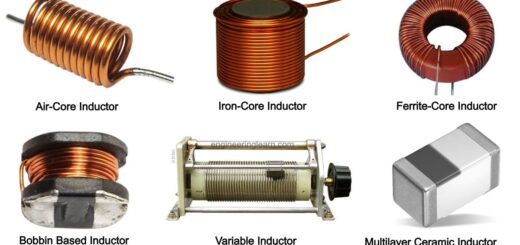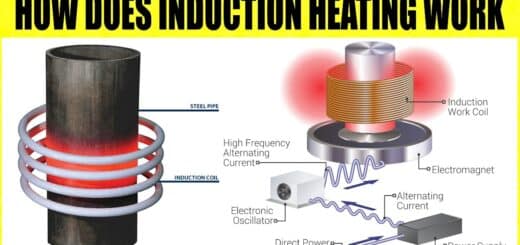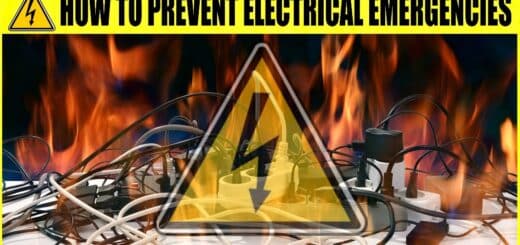Generator Parts – Diesel Generator & Electric Generator [with Function & Pictures]
![Generator Parts - Diesel Generator & Electric Generator [with Function & Pictures]](https://engineeringlearn.com/wp-content/uploads/2022/07/Generator-Parts-1024x539.jpg)
What is Generator?
Generators are gadgets that provide electricity when power from the nearby matrix is inaccessible. They are most times used to supply back-up power to offices, organizations, or homes during power failure or outrages, yet they can likewise be utilized as an essential power source in regions where a neighborhood electrical grid is inaccessible or hard to access like mining and farming tasks or even new developments and construction. In this way, by knowing all aspects of the generator, you can be more prepared for when the generator breaks down during use.
Below are some essential points you should keep in mind before purchasing a Generator
- Pollution – The emission or emanation of air pollutants like carbon monoxide and nitrogen oxide is high in diesel-run generators.
- High Installation Cost – Even if the fuel prices were low, the installation costs for generators would be high as it requires high skill and knowledge of all components.
- Regular Maintenance – Generators need to be examined thoroughly to ensure longevity. Regular checks on oil change, channel substitution, and other moving parts are vital.
- Oversize – Generators can be heavy and might make it hard to carry to places.
Parts of Generator
Let’s Have some discussion about the parts of the Generator in Detail: –
1. Engine
Each machine contains an engine or motor, which by and large converts the fuel source into usable energy and permits it to move or carry out its mechanical function. Thus, the engine is at times called the machine’s main mover. In a generator, the engine uses its fuel source (gas, diesel, petroleum gas, propane, biodiesel, water, sewage gas, or hydrogen) to create mechanical energy the generator will convert into power or electricity.
Every generator engine design intends to make the maximum supply of electrical flow by running on a particular fuel or other power sources. Some engines commonly utilized in the design of generators include reciprocating engines, steam engines, turbine engines, and micro turbines.
2. Fuel System
Generators running on fuel have a framework that stores and pumps the appropriate fuel to the engine. The tank stores sufficient fuel to power a generator for an identical number of hours. The fuel pipe connects the tank to the engine, and the return pipe interfaces the engine to the fuel tank for the return of fuel. The fuel pumps move the fuel from the tank through the fuel pipe and to the engine. A fuel channel filters any debris from the fuel before delivery to the motor. The fuel injector atomizes the fuel and infuses it straightforwardly into the ignition chamber of the engine.
3. Voltage Regulator
The voltage regulator effectively directs the voltage output. There is too much that occurs here to make sense of in this article alone, that we would likely need a completely different piece to depict the entire voltage regulation process. In straightforward terms, it ensures that the generator produces power at a steady voltage. Without it, you would see massive fluctuations reliant upon how fast the engine is working or functioning.
Don’t bother saying, all the electrical equipment we use cannot deal with such an insecure power supply. Along these lines, this part does something amazing to keep everything smooth and consistent.
A) Electric Generator
An electric generator is a machine used to deliver electrical power, which can be utilized for some applications, from small power appliances to large modern machines. A well-known option is to utilize a matrix power produced from petroleum products or wind turbines and a steam turbine in a power plant.
There are numerous generator types, including petrol generators, compact generators, inverter generators, home generators that might work on flammable gas, reserve generators to hold power on during an outrage, and extremely bigger industrial generators. This article will mostly give some essential data on diesel generators known as genset, their working guidelines and their principal parts.
Parts of Electric Generator
1. Engine
The engine section or area is the workhorse of the electric generator. The engines of an electric generator are generally powered by either natural gas or diesel fuel. The fuel runs the engine, and as the engine runs, different parts, containing the alternator and battery segment, convert the mechanical energy into appropriate power for different devices.
In an electric generator, the engine employs its fuel source (such as diesel, gasoline, propane, natural gas, biodiesel, sewage gas, water, or hydrogen) to change the mechanical power of the framework into electricity. Every engine design of the electric generator expects to make a most extreme wellspring of the electrical flow by using a specific fuel or other energy sources. A few engines ordinarily utilized in the demonstration of electric generators are turbine motors, steam motors, responding motors, and microturbines.
2. Fuel System
Electric generators working in light of fuel have a framework that saves and pumps the best fuel to the engine. The fuel system is the primary segment of the generator. Without fuel, the engine fails to perform. This implies that the proper fuel should be put into the framework, and enough fuel ought to be in the electric generator and on location to continue the framework activity.
The tank saves sufficient fuel to run the framework for an equivalent number of hours. The fuel pipe connects the tank to the main machine, and the return pipe joins the engine to the fuel source for the return of the fuel. The fuel pumps transmit the fuel from the source inside the fuel pipe and to the engine. The channel area filters any trash from the fuel prior to use it in the engine. The fuel injector grinds or crushes the fuel and sends it straightforwardly into the combustion chamber of the framework.
3. Alternator and Electric Generator End
The alternator is one of the most important sections of electric generator parts, which changes the mechanical power produced by the engine into the electrical output. The alternator is presented as the “Genhead”, making up a part of the electric generator that creates the electrical output from the mechanical power provided by the engine.
The alternator incorporates the rotor (or armature) and the stator. The rotor moves to make a fixed turning electromagnetic output around the stator. The rotor works as a moving component that generates a pivoting magnetic result through 1) Permanent magnets, 2) Using an exciter, and 3) Induction. The rotor produces a moving magnetic environment around the stator, which contains a voltage contrast between the stator windings. This produces the current output in the electric generator.
4. Cooling, Exhaust & Lubricating Systems
The temperature of the electric generator parts needs specific guidelines to avoid overheating during the activity. Electric generators can utilize a coolant, fan, or both to monitor the temperature of the framework at work. The electric generator likewise generates exhaust as the ignition chamber consumes the fuel. Exhaust frameworks eliminate the perilous gases emitted by the framework during the activity. Electric generators incorporate a few moving components, every one of which needs oiling to ensure smooth working. The lubricating systems frameworks keep all the electric generator parts well oiled.
5. Control Panel
The control panel or board of the electric generator depends on the UI. It allows the operator of the framework to control the different electric generator parts and adjust them as required. These primary controls are the value of voltage created by the electric generator, the fundamental flow, and the frequency of the output. The system control is supported by various displays and gauges, and the electric generator settings are designed through a progression of switches and buttons.
6. Battery Charger
Like your different machines, an electric generator is initially started utilizing a battery. Since this battery ought to be charged, the framework will also incorporate a battery charger that recuperates the battery when the framework is in operation.
7. Voltage Regulator
The alternator of an electric generator creates the current as of the principal output. This is certainly not a suitable current for recuperating a battery storage part or operating different machinery. All things considered; direct current is required. The voltage regulator decides the voltage of the current and converts it from the alternative type to the direct current.
8. Main Frame/Skid
The skid or main frame is the lodging of the electric generator parts that keeps all parts and components. The skid can be made to allow the electric generator to sit on a substantial cushion on the ground, or it tends to be joined to a trailer for simple transportation of the framework. It can likewise ensure that the electric generator parts are appropriately earthed or grounded, which is significant for good operation and the safety of the electric generator parts.
9. Lubrication System
Since electric generators incorporate specific moving parts, they ought to have a lubrication segment. The lubrication part ensures that the sliding parts don’t create excessive friction and overheat, which would make the framework come up short.
B) Diesel Generator
Diesel generators produce either nonstop or reserve capacity for various users like homes, schools, emergency clinics, and industrial centers. They can be sufficient enough to be effortlessly conveyed or large enough to fit in houses. Notwithstanding, there is a reasonable unit for every user. Diesel generators convert fuel energy into electrical energy to give power to the loads.
What a person looks for before buying a Diesel generator?
- Durability: – Diesel Generators can keep up for quite a while. They can keep up in harsh settings with proper support and maintenance.
- Low Maintenance: – Compared to the gas engine, Diesel Generators are generally easy to maintain. It is not difficult to manage because of its few outer parts.
- Safe: – Diesel is combustible; however, diesel conveys less risk of getting ignited exceptionally contrasted with different fuels like gasoline.
- Accessibility: – The simple admittance to diesel makes diesel generators more significant. Diesel being less expensive makes it more convenient and reasonable.
- Efficiency: – Diesel generators are more eco-friendly when compared or contrasted with other engines. Thus, it runs more than some other petroleum fueled engines.
Parts of Diesel Generator
1. Alternator
The alternator is the part liable for power output generation. Here, electromagnetic induction comes into play described in the following. An alternator contains numerous complex parts, yet one of the main significant parts or components is the rotor. It comprises a shaft that rotates by the mechanical energy provided by the engine and various permanent magnets installed around it, and consequently, a magnetic field is created.
2. Fuel System
The fuel system or framework for the most part comprises a fuel tank with a pipe interfacing it with the engine. The fuel tank size, in the end, deals with the time a generator can be active. An extensive variety of silent generators is typically given as standard with the fuel tanks on the base of the electric generator.
3. Voltage Regulator
The voltage regulator or controller is the most complicated part of an electric generator. This part has an informative reason, which is regulating the voltage output. As a matter of fact, it ensures that the generator produces electricity at a legitimate consistent voltage. Without any voltage regulator, outrageous fluctuations happen, depending upon the engine speed. Every kind of electrical gadget, we use has no control over such an unsteady power supply. Consequently, the objective of utilizing this part is to keep everything smooth and uniform.
3. Cooling System and Exhaust System
These two parts both have essential functions. The obligation of the cooling system is to prevent the generator from overheating. The coolant is released in the generator, which checks all the engine and alternator additional heat energy. The coolant then, at that point, takes all of this heat through a heat exchanger and releases it outside the generator. The exhaust framework works in much the same way to the car exhaust. It catches any gases produced by the diesel engine, enters them through the piping framework, and eliminates them from the Genset.
4. Lubrication System
The Lubrication system is a section that interfaces with the engine and pumps oil into it to ensure each part works without a hitch and doesn’t grind against different parts. Without a reasonable lubrication system, the machine will break down.
5. Battery Charger
A diesel engine requires a little electrical motor to assist with setting it in motion. The small motor works with a battery, which should be charged.
6. Control Panel
This part is simply on account of controlling and operating the generator. This has every controlling object, including the start button, a frequency switch, an engine fuel indicator, a temperature indicator of the coolant, and much more, enabling the user to do different works or check certain things.
The control panel starts and terminates the generator, and monitors the engine and alternator to implement monitoring, maintenance, and control.
The control panel ensures everything runs properly. It can also provide synchronizing for parallel work activation.
7. Main Assembly Frame
Each generator should be held somehow or another, and this is the main frame of the assembly. It houses the entire generator and is, truth be told, where all the different diesel generator parts are made onto.
It keeps it all intact, and it very well may be an open design – or closed(canopied) for additional supervision and sound attenuation. The open-air generators are typically housed in a safeguarding frame that is weatherproof for damage prevention
Conclusion
You come out as comfortable or familiar with how a diesel generator and Electric generator function. In a nutshell, the diesel engine supplies the mechanical energy of the alternator, which is then switched over completely to an electrical stream inside seeing an attractive field and electromagnetic enlistment.
Image Source: – enginepowersource













